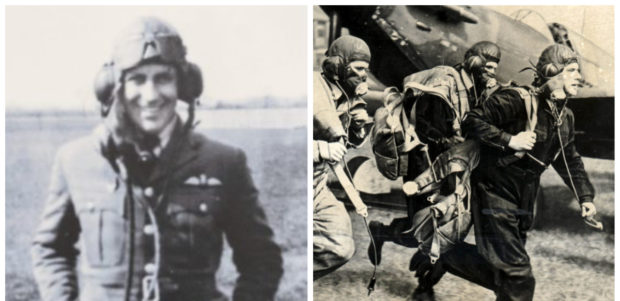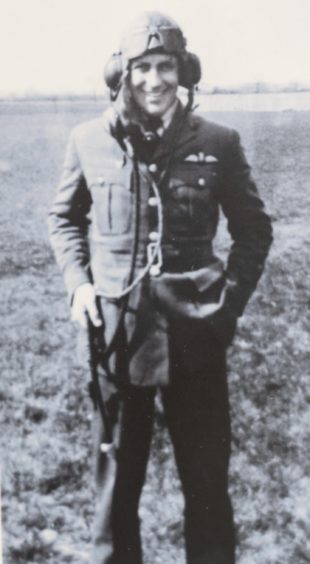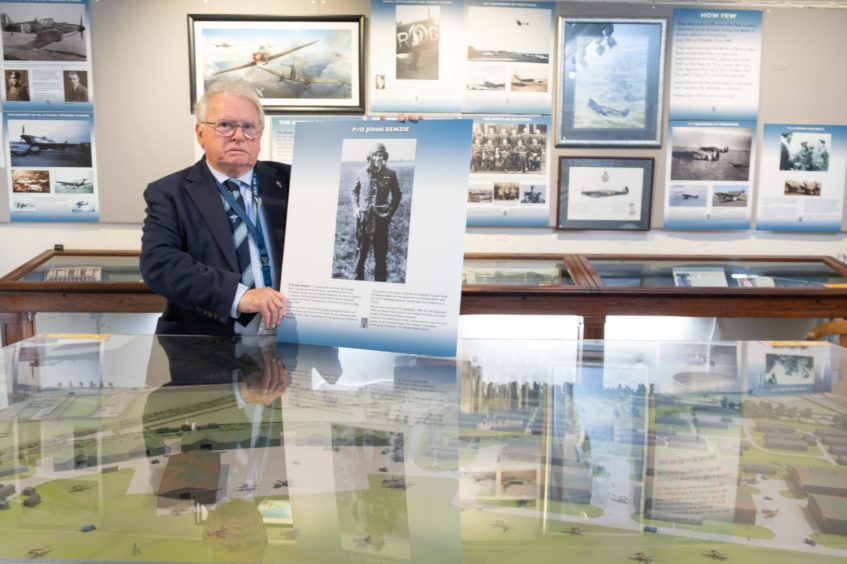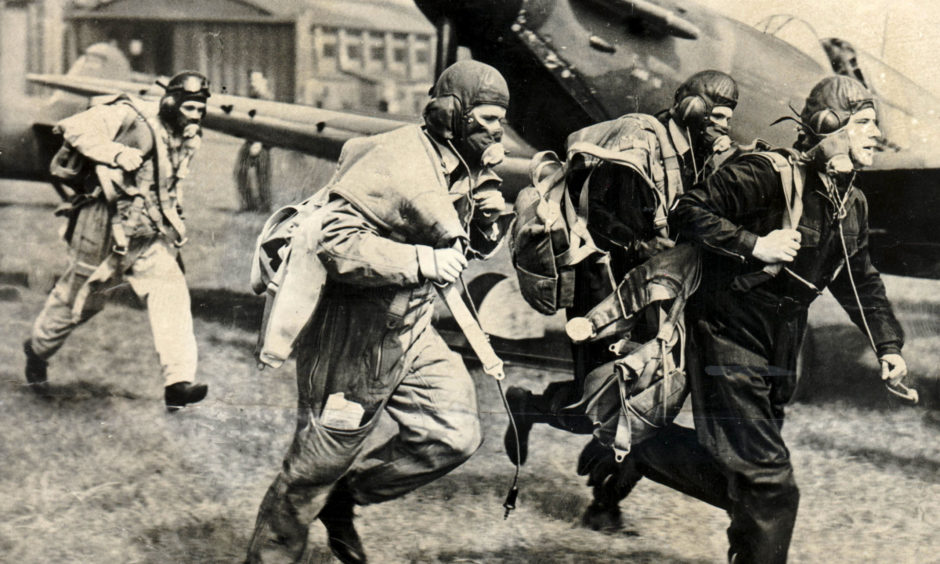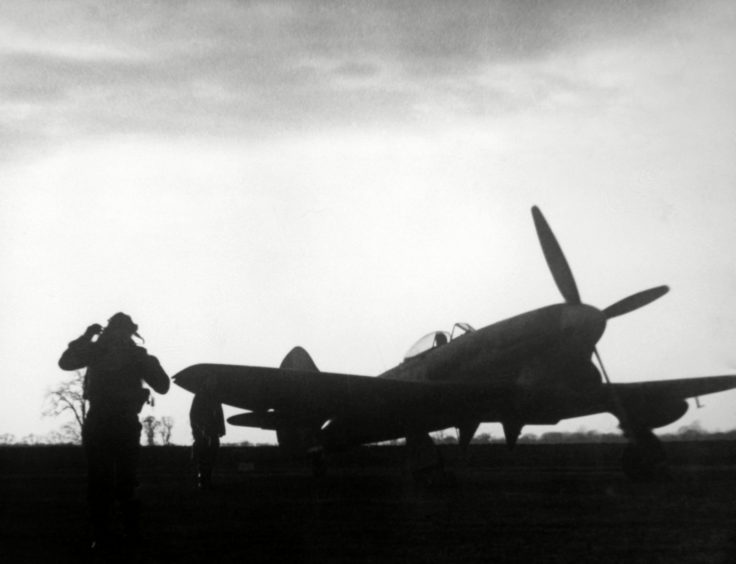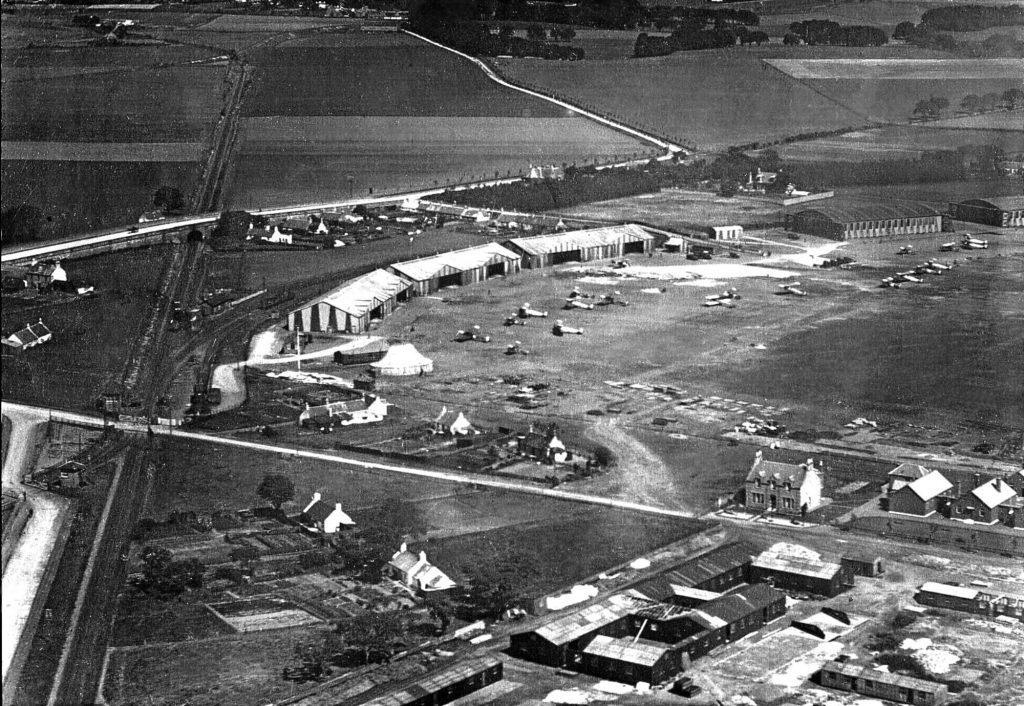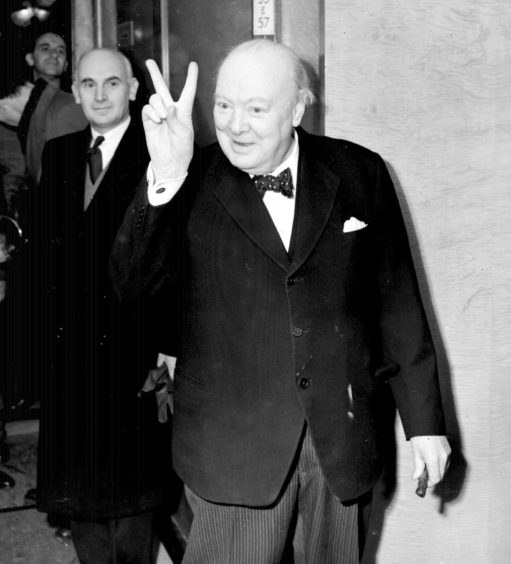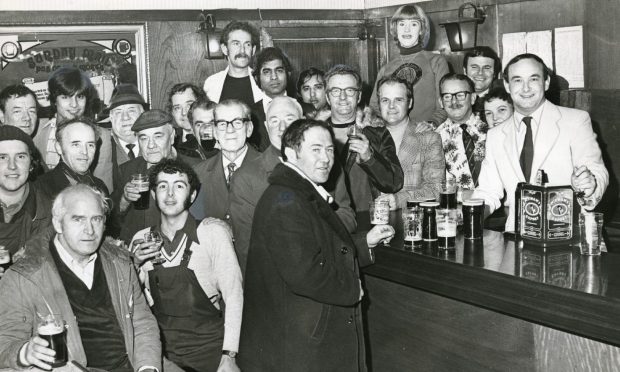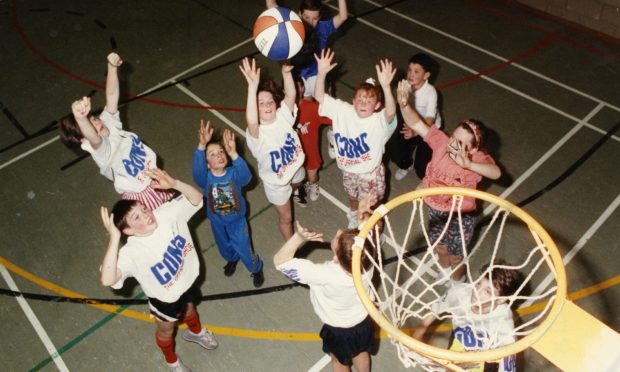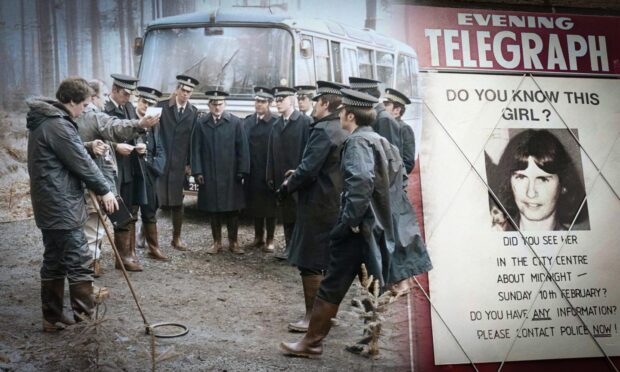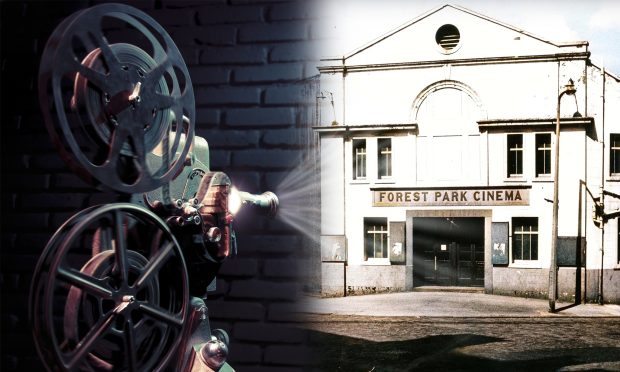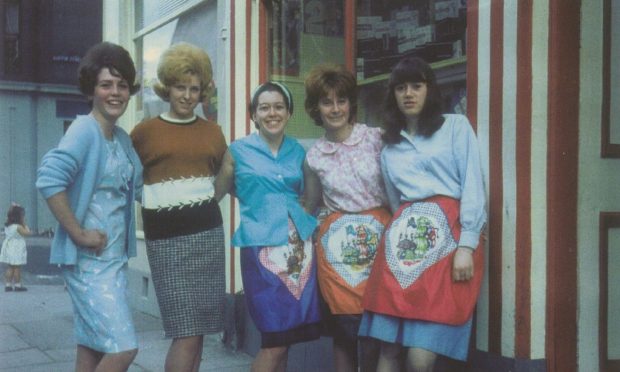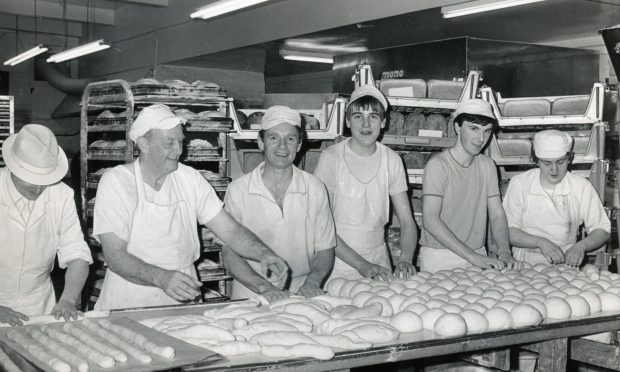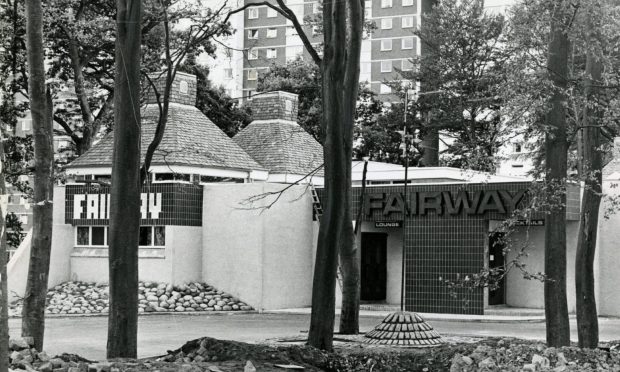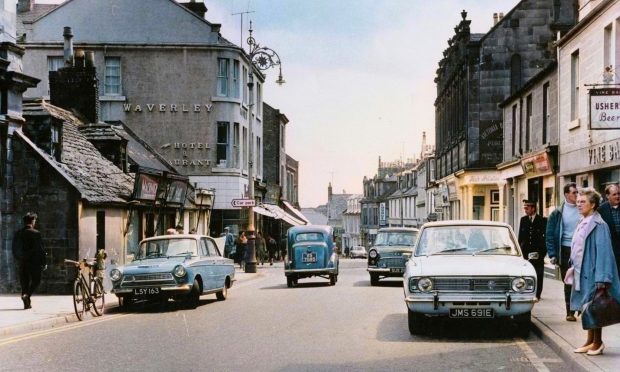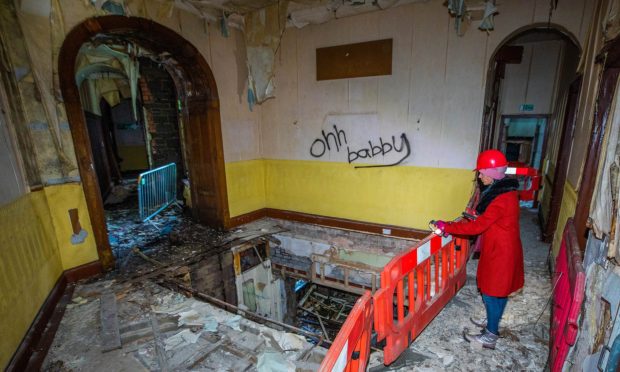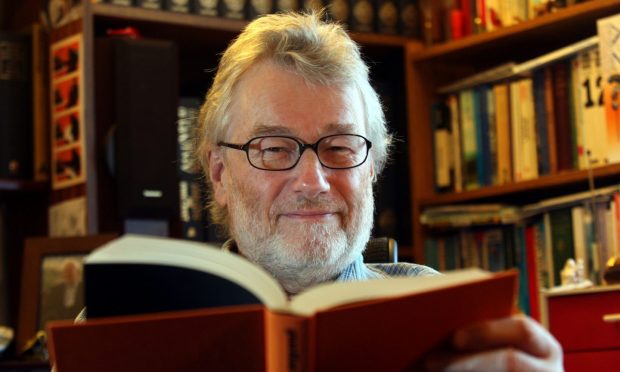He was the Canadian pilot who got his wings at Montrose before he vanished off the map in the Battle of Britain.
Pilot Officer John ‘Jack’ Benzie disappeared during heavy fighting over the east of London 80 years ago on September 7.
The 25-year-old was a Hurricane pilot with legless RAF ace Douglas Bader’s 242 Squadron when it set off on a mission with other units in a Big Wing formation that Saturday afternoon.
His remains went missing for decades – until two metal detectorists stumbled across parts of the aircraft wreckage at Blackacre in Theydon Bois, Essex, while looking for Roman coins.
Even when the wreckage was discovered, the tragedy was no less perplexing.
John Benzie
Benzie, from Winnipeg, was born on March 14 1915 and educated at St John’s Technical School.
He served in Princess Patricia’s Canadian Light Infantry for three years prior to joining the RAF on a short service commission and came to England on March 16 1939 on the RMS Aurania.
Dr Dan Paton, the curator of Montrose Air Station Heritage Centre, said Benzie arrived at RAF Montrose in July 1939 to train as a pilot at No.8 Flying Training School along with about 40 other young men who made up No.12 course.
He said: “He would already have learned the rudiments of flying in an aircraft such as a Tiger Moth, now he was to gain experience on military aircraft.
“Benzie must have felt at home in Montrose, which was the only RAF station to have a pipe band.
“Before joining the RAF, Benzie had served in a Canadian Scottish regiment and played the pipes.
“Montrose had a long record of training pilots, having been an important training centre in the First World War.
“When war threatened again, RAF Montrose was re-opened as No.8 Flying Training School on January 1 1936.
“By the time Benzie arrived, approximately 500 pilots had got their wings at Montrose.
“He was trained by experienced instructors, men like John Betty, who had hundreds of hours in their logbook.
“The training was thorough but, in the words of Tom Neil, his near contemporary at Montrose, still harked back to the last war.
“He got his wings at Montrose in December 1939 and was commissioned as Pilot Officer.
“After further training on Hurricanes he was posted to 242 Squadron at Church Fenton.”
Mystery disappearance
The squadron moved to France after the German invasion and he was shot down and baled out near Dunkirk on May 23.
After recovering from his wounds, he re-joined the squadron on July 11, right at the start of the Battle of Britain, already a battle-scarred veteran.
Benzie took off in Hurricane P2962 on September 7 and never returned from a combat over the Thames Estuary.
He was reported missing “but believed to have lost his life”.
A cable to his parents John and Agnes Benzie from Winnipeg on September 9 was confirmed by a letter written two days later.
Dr Paton said: “He was posted missing, the fate of many aircrew.
“17,000 Canadians flew with the RAF and approximately one third of them have no known graves.
“Many would have been bombers crews lost over Germany but Benzie crashed in Britain.
“An uncontrolled Hurricane which crashes into the ground from a great height makes a deep crater and at the time, investigating such crashes was not a high priority so Benzie was commemorated on the Runnymede Memorial.
“It was not until 1976 that an aircraft archaeology group found the wreck of a Hurricane and the remains of the pilot at a depth of 18 feet underground.
“The location, Theydon Bois, Essex, fitted Benzie’s last know position.”
The discovery
Tony Graves and John Tickner from the London Air Museum pinpointed the crash in the sloping field which runs just alongside the London Underground Railway Line at Blackacre.
The pair secured permission to dig there and carried out an excavation in 1976.
They discovered a number of items which proved to come from a Hawker Hurricane.
The Rolls-Royce Merlin engine, cockpit wreckage and skeletal remains of the pilot emerged from a depth of 18 feet.
The aircraft had been very badly burned and all trace of identification had been lost in the inferno despite an extensive search.
A Coroner’s inquest was held in Epping, but this proved inconclusive, as it was not possible to identify either the pilot or the plane.
There was insufficient evidence to meet the strict criteria of the Commonwealth War Graves Commission and the remains were interred at Brookwood Military Cemetery in July 1977 in a grave which was marked “Unknown RAF Pilot”.
In 1981 the site was re-excavated in an effort to find some evidence as to the identity of the pilot but nothing more conclusive came to light.
Altogether the RAF lost 17 aircraft on September 7, of which five were unaccounted for and listed as ‘missing in action’.
By process of elimination, it is believed by a number of aviation historians that the aircraft concerned was Hurricane P2962 of 242 Squadron which was piloted by Benzie, although this has never been confirmed.
The Rolls-Royce Merlin engine data plate bearing the number 174050 did not match the records for Hurricane P2962 although these aircraft were often subject to engine changes during their service life which were not always recorded.
Hawker Hurricane 1, P2962, was built by Gloster Ltd, as one of 500 built in that company’s first batch started in 1939 and completed in 1940. Delivered to the RAF in late May 1940 it had only been given to 242 Squadron four days earlier.
Remembering John Benzie
Dr Paton said the Commonwealth War Graves Commission have strict rules governing bodies which are discovered, something which happens not infrequently.
“No conclusive evidence to identify the aircraft or the pilot could be found to meet their criteria,” said Dr Paton.
“Almost certainly, they are the remains of Pilot Officer John Benzie.
“During the war many aircraft crashed in Angus and RAF Montrose was a pioneer of mountain rescue and had air-sea rescue launches in readiness at the port.
“Finding aircraft in the mountains was not easy and sometimes it took months to find the missing but at least they were rarely buried.
“Exceptions were the two Hurricanes from RAF Tealing which crashed into Montrose Basin.
“One of them went into the mud off Old Montrose and it is not clear whether the body of the pilot was ever extricated.
“John Benzie is remembered at Montrose Air Station Heritage Centre in our exhibition, ‘Montrose in the Battle of Britain’.
“A new building, to house a new, much larger exhibition on the Battle of Britain was planned for this year but like so much, has had to be deferred.
“When it eventually opens, John Benzie and all the other men who trained at Montrose and died in the Battle of Britain will the fittingly commemorated.”
Benzie is also remembered in Canada where the huge Lake Benzie has been named after him.
Parts of what may have been the young officer’s Hurricane were placed in the centre of Lake Benzie by the Royal Canadian Air Force to mark the 50th anniversary of his death.
The Battle of Britain was a key turn of events
Eighty years ago between July 10 and October 31 1940, was the first battle in history waged almost exclusively in the air, as Luftwaffe aircraft streamed over Britain with the intent of gaining air superiority and bombing the nation into quick submission.
But the vastly outnumbered pilots of the RAF, who Churchill famously called “The Few”, had other ideas as they stood up to wave after wave of German fighters and bombers, sending a clear message to Hitler that Britain would never surrender.
It was a key turn of events that eventually led to the unconditional surrender of Nazi Germany nearly five years later.
The Luftwaffe initially targeted industrial areas and naval targets in the south and south east of England.
The focus then turned to the RAF and the idea of neutralising Fighter Command.
By the end of October 1940, the Allies had lost 1,547 aircraft and suffered 966 casualties, including 522 deaths.
Sadly, all but one of Britain’s once 3,000-strong The Few have now gone.
Former Hurricane pilot, Wing Commander Paul Farnes, died peacefully at his home in Hampshire in January aged 101. The death of radar operator Terry Clark, also aged 101, on the eve of VE Day in May, left John “Paddy” Hemingway as the last surviving Battle of Britain veteran.
